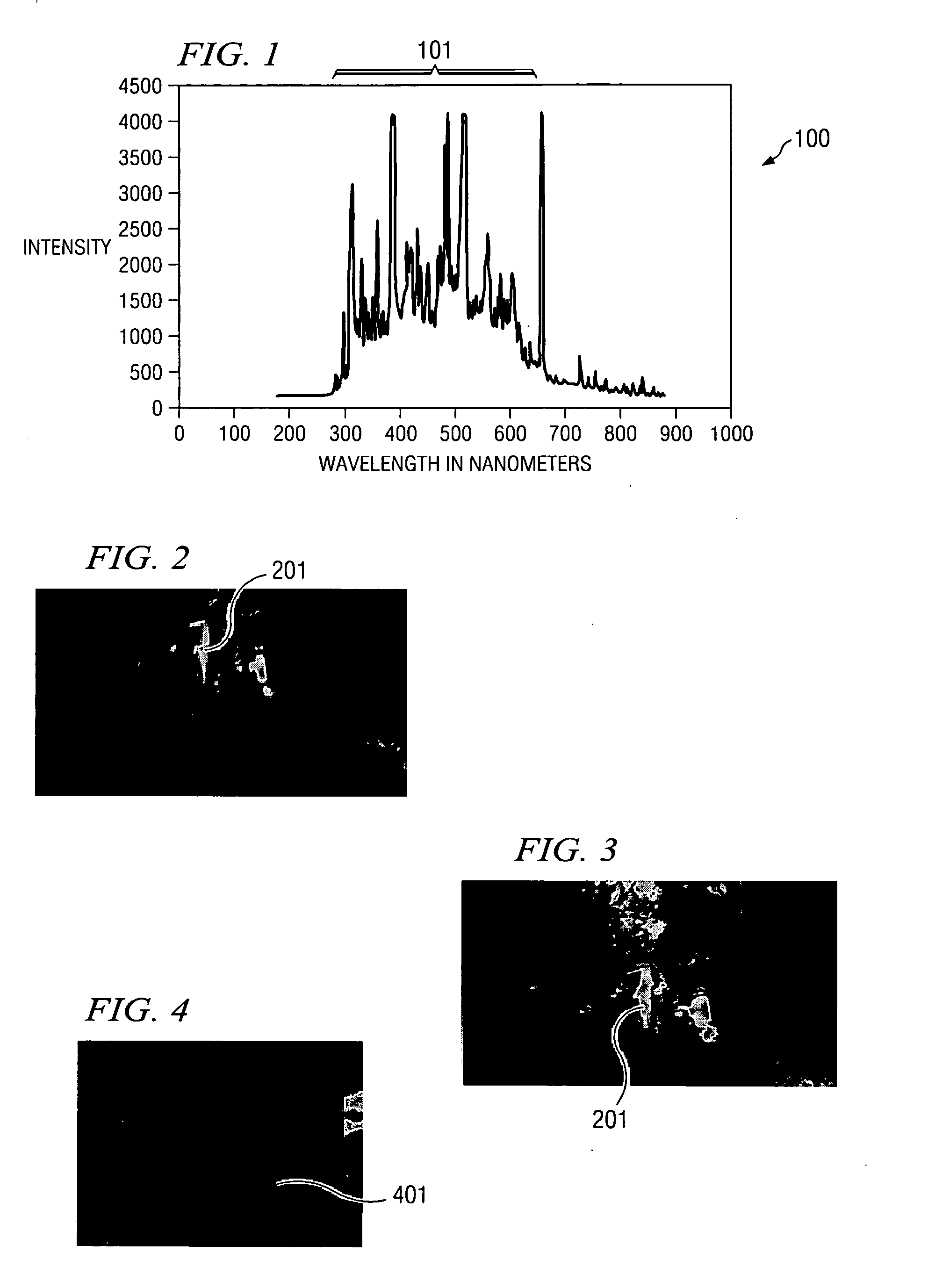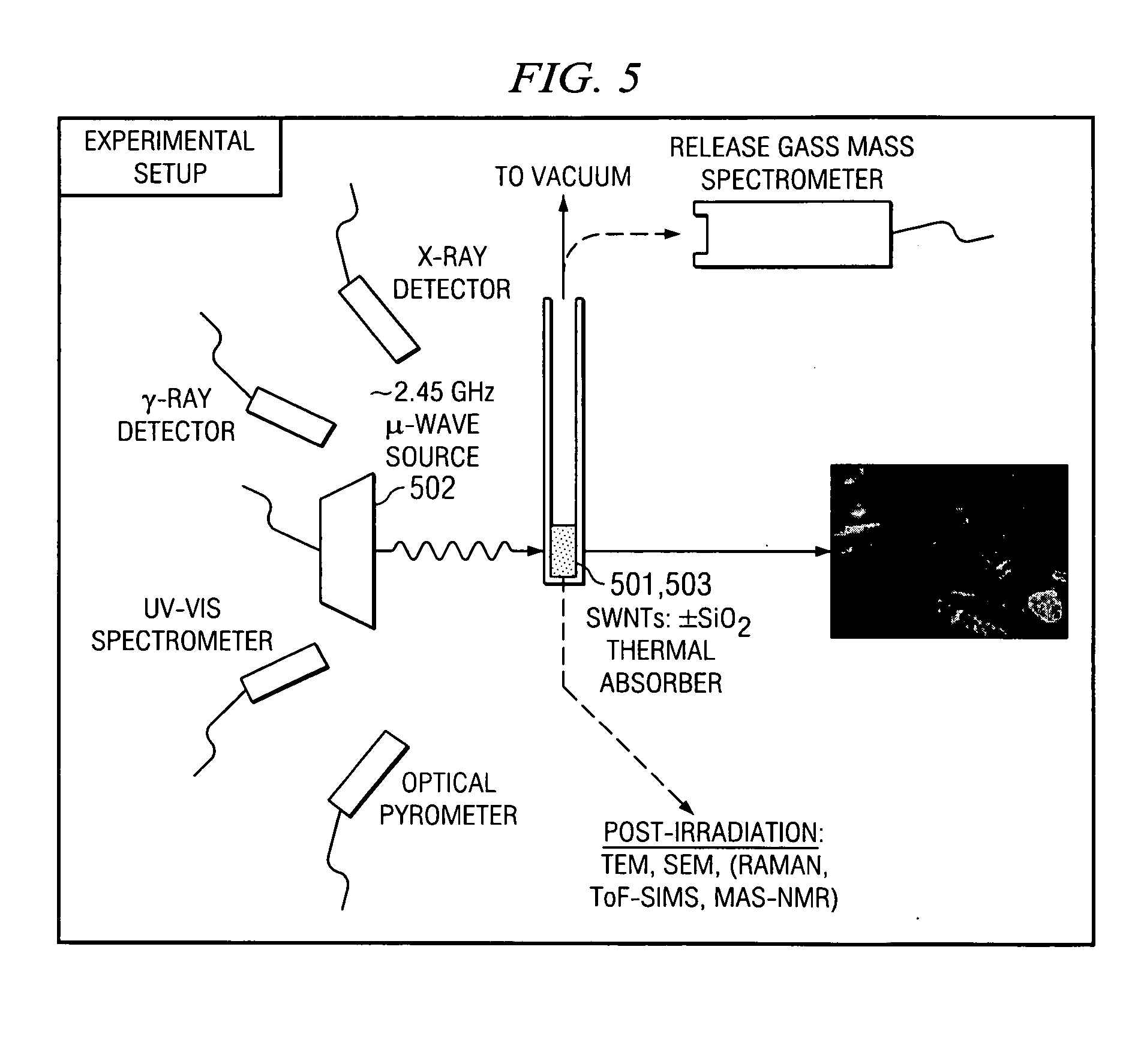Process and apparatus for energy storage and release
a technology of energy storage and release, applied in the field of carbon nanotubes, can solve the problems of damage to carbon nanotubes, ineffective fuel cell applications, and slow rendering of adsorption or absorbed gas by conventional desorption techniques, so as to increase the purity reduce the diameter of nanotubes in samples, and increase the density of carbon nanotube samples
- Summary
- Abstract
- Description
- Claims
- Application Information
AI Technical Summary
Benefits of technology
Problems solved by technology
Method used
Image
Examples
Embodiment Construction
The present invention comprises an improved process and apparatus for the irradiation of carbon nanotubes using EM radiation, and the utilization of the effects of the process thereof. The invention is implemented by the deposition or placement of nanotubes at specific locations in or proximate to an object or in isolation. More specifically, the present invention relates to a process and apparatus for delivering controllable amounts of heat energy, from low levels to very intense levels, to microscopic or macroscopic locations in a object remotely, not necessarily involving direct contact with the object, where the energy delivered remotely is less than the energy released from the object or for delivering controllable amounts of heat energy, from low levels to very intense levels generally. The present invention further comprises the process of obtaining a certain reaction and device or method for initiation of said reaction to provide an unexpected source of local thermal energy...
PUM
 Login to View More
Login to View More Abstract
Description
Claims
Application Information
 Login to View More
Login to View More - R&D
- Intellectual Property
- Life Sciences
- Materials
- Tech Scout
- Unparalleled Data Quality
- Higher Quality Content
- 60% Fewer Hallucinations
Browse by: Latest US Patents, China's latest patents, Technical Efficacy Thesaurus, Application Domain, Technology Topic, Popular Technical Reports.
© 2025 PatSnap. All rights reserved.Legal|Privacy policy|Modern Slavery Act Transparency Statement|Sitemap|About US| Contact US: help@patsnap.com



